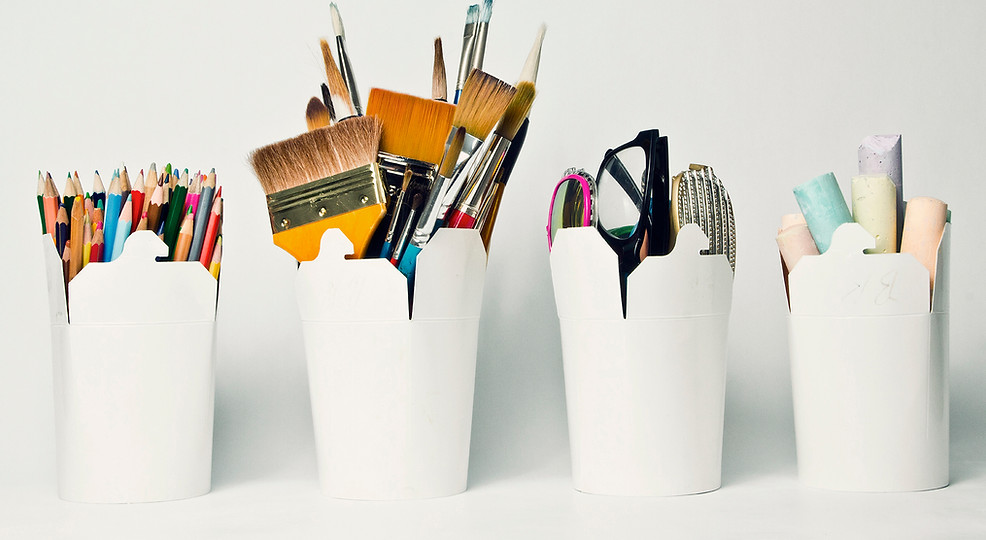Case Summary: Rentmeester v. Nike
- copyrightforcrafte
- Jan 7, 2021
- 4 min read
Updated: Mar 23, 2021

What Lead to the Lawsuit?
Jacobus Rentmeester took this iconic photo of Michael Jordan in 1984. I don't know about you but, I have never seen this exact photo before but I feel like I have. If the photo also seems familiar to you, this lawsuit will certainly explain why.
The photograph shows Jordan leaping into the air doing his take on a ballet pose - the grand jeté. The photo is set in front of grassy hills and a cloudless sky. The basketball hoop was mounted on a tall pole and brought in just for the shot. Rentmeester chose a low position for the camera and used special lights and a fast shutter speed to capture a clear photo even with the sun facing the camera. Rentmeester fastidiously chose all of these details and instructed Jordan on exactly what to do in order to get this shot. The photo was published in Life magazine as part of an Olympic athlete spread.

Not long after publication, Nike contacted Rentmeester and asked about borrowing the photo for a presentation. Nike paid $150 under a limited license at that time. Shortly thereafter, Nike hired a photographer to produce its own version of Rentmeester's photo. When Rentmeester saw Nike's rendition, he threatened to sue them for infringement but Nike paid him $15,000 for a license to use the photo for a period of two years.

In 1987, Nike created its "jumpman" logo based on the Jordan pose and it went on to become one of the most recognizable logos in athletic wear. Nike has sold and marketed billions of dollars worth of merchandise using this logo. It is basically ubiquitous in the sporting world.
Rentmeester was never paid again after the $15,000 he received in March 1985 and he brought this lawsuit in 2015 alleging, among other things, copyright infringement. Because he waited so long to bring the lawsuit, he could only sue for the most recent three years of damages since copyright infringement has a three year statute of limitations.
What Did the Court Determine?
Despite the similarities between the parties' respective photographs, the District Court determined that Nike did not infringe on Rentmeester's copyright and the 9th Circuit Court of Appeals confirmed this decision. Even though it was proven that Nike copied Rentmeester's "highly original" photograph, it was not copyright infringement. How's that? Let's break it down a bit.
Nike Copied the Photograph
In order to show that there was copying, Rentmeester needed to demonstrate that Nike 1) Had access to the photograph and a reasonable opportunity to view it and 2) The photos shared similarities one would not expect if the two works were created independently.
Rentmeester easily established that Nike had access and a reasonable opportunity to view the photo because he gave it to them directly after they specifically asked for it. Additionally, because the photo was deemed "highly original," the conceptual similarities between the two were enough to establish that Nike copied Rentmeester's photo.
What Nike Copied Was Not Protected; No Substantial Similarity
Having established copying, Rentmeester then had to show that the two photos were "substantially similar" in order to prove his infringement claim. The 9th Circuit uses both "intrinsic" and "extrinsic" tests to determine whether there is substantial similarity between works, but only the "extrinsic" test was at issue in this appeal.
The extrinsic test involves filtering out the unprotectible elements of a work and assessing the objective similarities between only the protected parts. So, ideas, concepts, public domain elements, etc., are not considered at all because they are not protectible by copyright. Instead, the Court considered elements like lighting, angles, subject matter, pose, depth of field and background composition. However, the issue was that none of those elements are copyrightable in isolation. Meaning, you cannot copyright a pose by itself or a certain camera angle. What is protected is the "selection and arrangement of the photo's unprotected elements." Another photographer is free to copy any of the "individual elements featured in a copyrighted photo as long as they do not use the same 'selection and arrangement' of those elements."
Here, the Court considered the pose, background, lighting, setting, the hoop, the camera angle and the arrangement. While they found some similarities - the pose, camera angle and outdoor setting chief among them, these were not substantially similar. Ultimately, the Court held that Nike only copied the general idea and concept of Rentmeester's photo; it did not copy the expression. Because ideas and concepts are not copyrightable, Nike did not infringe.
The Takeaway For Crafters
What does this case mean for you, fellow crafter? The usefulness here is in the demonstration that not all copying is illegal. Most crafters would see something that was clearly copied from their work and jump straight to issuing a takedown notice. But, if what was copied is not protectible, then the copying was not illegal. If it is not illegal, filing a takedown would be improper. If you are dealing with copying, always try to figure out whether what the person copied is exclusively yours.




Comments